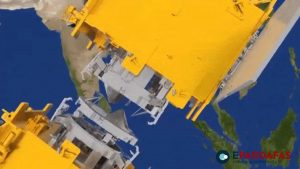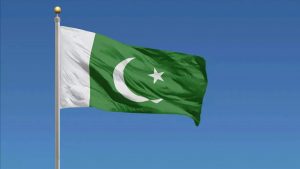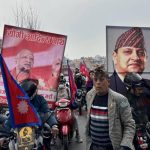
Two years of war in Ukraine

February 24 marks two years of Russia’s war against Ukraine.
While the conflict dates to 2014, when Russian forces took over Crimea and fostered separatist rebellions in Ukraine’s eastern regions, Russia shocked the world in early 2022 by launching a full-scale invasion aimed at toppling the central government in Kyiv.
While many analysts expected Ukraine to fall within days, the country’s fierce resistance and support from its Western allies thwarted Russia’s hopes of a quick victory.
Since then, Europe’s largest armed conflict since World War II has unfolded across three fronts, with cities and territories changing hands through multiple offensives and counteroffensives.
Northern Front
Russia’s February invasion began with a surprise attack on the northern Zhytomyr, Kyiv, Chernihiv and Sumy oblasts, until then largely untouched by the conflict.
Minutes after Putin’s announcement of a “special military operation,” Russian missiles and artillery struck Ukrainian border posts, as well as targets in Kyiv and other major cities, while airborne troops began to seize key airports.
At the same time, Russia launched a two-pronged ground assault toward the capital, with columns of troops and armored vehicles advancing southward from Belarus and westward through Sumy Oblast.
The invading forces captured the Chernobyl nuclear power plant, as well as multiple villages and towns along the way, while bypassing major cities like Sumy and Chernihiv.
Although Russian forces were able to reach the outskirts of Kyiv within several days, Ukrainian ambushes on the advancing column left many of Russia’s military vehicles stranded on blocked roads and its forward troops without supplies. Localized fighting continued throughout March as Ukraine began a successful counteroffensive. On March 29, Russia announced it was redeploying its units to other fronts. By early April, Ukraine’s Defense Ministry declared the region was fully clear of invading forces.
Since its withdrawal, Russia has not attempted to reopen the northern front. However, artillery and missile bombardments of cities, including civilian targets, have continued, and the population has been deeply impacted by war crimes committed under Russian occupation.
Southern Front
The southern portion of Russia’s invasion was launched from the Crimean Peninsula, occupied since 2014.
In the days leading up to February 24, the Russian navy blockaded the Azov and Black seas under the guise of military exercises.
This allowed Russian forces to quickly cross into Kherson Oblast and capture Nova Kakhovka within the first day of the invasion, securing Crimea’s drinking water supply via the North Crimean Canal.
Afterward, the offensive continued in two directions. By early March, Russian forces moving northeast captured the cities of Melitopol and Berdiansk.
The Zaporizhzhia nuclear power plant at Enerhodar was also captured, causing global concern when it was reported to have been damaged in the fighting.
From there, invading troops advanced toward the major port city of Mariupol, already under siege by Russian forces from the partially occupied Donetsk Oblast to the north and an amphibious landing by Russian naval forces from the west.
The assault on Mariupol lasted for two months, with thousands of civilians killed and up to 90% of buildings damaged or destroyed, including civilian targets such as a maternity ward and a theater where children had taken shelter.
The remaining Ukrainian defenders retreated to the Azovstal Iron and Steel Works, where they remained under siege until the last of them surrendered on May 20.
The fall of Mariupol achieved Russia’s long-suspected goal of linking its occupied territories in Donetsk Oblast and Crimea, giving it control of the entire Azov Sea coast.
Meanwhile, another Russian force moving northwest was able to quickly capture Kherson by March 2, making it the first major city and the only oblast capital to fall in the invasion and raising suspicion of collaboration by some local Ukrainian authorities. Russian troops also moved toward Mykolaiv but failed to occupy the city after being repeatedly driven back by Ukrainian forces.
The front line remained mostly static through the summer until September, when Ukraine launched a successful counteroffensive to take back Kherson. As a result, Russian troops were forced out of the city and by November 9 had withdrawn entirely from the west bank of the Dnieper River.
The liberation of Kherson was seen as a major strategic victory for Ukraine, while in Russia it sparked criticism from nationalist figures who blamed the government for poorly handling the war effort.
Fighting has since continued along the river, with the destruction of the Kakhovka Dam in June 2023, considered to be Ukraine’s worst ecological disaster since the 1986 Chernobyl explosion.
Despite slow progress, an amphibious counteroffensive by Ukrainian forces managed to retake some areas on the river’s east bank as of December 2023.
The fighting on the southern front has also had global impact far beyond the front line.
As Ukraine’s grain and fertilizer exports are crucial to feeding much of the Global South, a United Nations-brokered agreement allowed commercial shipping to continue to operate in the Black Sea, despite continued Russian attacks on Ukraine’s port facilities in cities such as Odesa and Izmail.
Since the agreement’s expiration in summer 2023, an alternate corridor has been facilitated by naval forces from neighboring NATO countries.
Eastern Front
The battle in eastern Ukraine predates Russia’s 2022 invasion, dating to spring 2014 when Russian mercenary groups and Federal Security Service (FSB) operatives cooperated with local pro-Russian separatist leaders to seize most of Luhansk Oblast and key portions of Donetsk Oblast.
Since then, there has been sporadic fighting and shelling across the line of contact, with the conflict mostly remaining frozen.
In 2022, however, Russia officially recognized the self-declared Donetsk People’s Republic and the Luhansk People’s Republic and moved troops to their territory on February 21.
Upon the announcement of its “special military operation” on February 24, Russia advanced across the line of contact in the Donbas, with both Russian and separatist forces moving to join the ultimately successful assault on Mariupol to the south.
At the same time, more Russian forces moved from the city of Belgorod across the northeastern border toward Kharkiv, Ukraine’s second-largest city.
Heavy fighting occurred in the city’s northern suburbs, and Russian troops entered the city proper, while residential areas came under heavy shelling by Russian artillery, and Russian forces captured smaller nearby cities such as Izyum and Kupiansk.
But Ukraine managed to retain control of Kharkiv, and by May, Russian forces had largely been pushed out of artillery range of the city.
In September, Ukraine began a second counteroffensive in tandem with their successful Kherson counteroffensive in the south, retaking several hundred settlements and 12,000 square kilometers of territory, in many places pushing Russian troops all the way back to their border.
By September 11, Russian troops had withdrawn from all of Kharkiv Oblast west of the Oskil River.
Progress in the Donbas region has been more difficult for Ukraine. Russian forces captured Sievierodonetsk in May, followed by Lysychansk in July, bringing Luhansk Oblast fully under their control.
The Russian assault then continued toward the strategically located city of Bakhmut.
Bakhmut fell to Russian forces amid heavy losses after a nine-month battle described as the war’s longest and bloodiest, in which the city was largely destroyed.
A Russian breakthrough in February 2024 was successful in capturing Avdiivka after Ukrainian troops were forced to withdraw from the city to avoid encirclement.
External Politics
As of today, the front line remains largely unchanged since summer 2023, with Russia controlling all of Luhansk Oblast, about two-thirds of Donetsk Oblast, and most of southern Ukraine east of the Dnipro River.
With battlefield progress stalled, the further course of the war will depend largely on political factors outside the front line, such as the continuation of military aid to Ukraine from its Western partners and the domestic situation in Russia as it prepares for a presidential election in March.
VOA
- PM Oli Inspects ‘Sagarmatha Sambaad’ Secretariat, Calls for Streamlined Preparations
- Nepal Secures Six-Wicket Victory Over Hong Kong in Women’s T20 Cricket
- CPN-UML to Hold Central Secretariat Meeting on March 17
- Nepal’s Environment Minister Shahi Urges Global Action on Climate Change at UK Roundtable












Comments